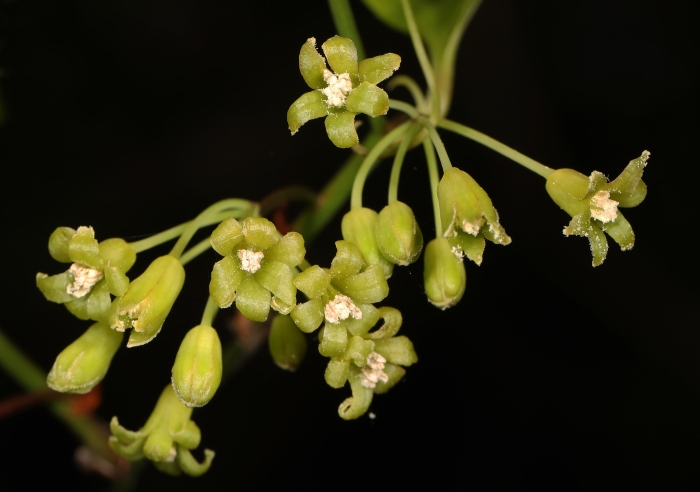Roundleaf Greenbrier
(Smilax rotundifolia)
Roundleaf Greenbrier (Smilax rotundifolia)
/
/

Judy Gallagher
CC BY 2.0

























































Estimated Native Range
Summary
This species is valued for its ability to provide dense foliage and cover, making it suitable for naturalistic plantings and as a wildlife habitat. It can be used for erosion control on slopes or as a ground cover if there is nothing to climb. Roundleaf Greenbrier prefers full sun but can tolerate part shade, requires medium amounts of water, and grows best in soils with medium drainage. While it can be a vigorous grower, it may become problematic if not managed, as the thorns can make it difficult to handle, and it can become entangled with other plants.CC BY-SA 4.0
Plant Description
- Plant Type: Vine, Shrub
- Height: 10-20 feet
- Width: 3-5 feet
- Growth Rate: Slow
- Flower Color: Yellow, Green, White
- Flowering Season: Spring
- Leaf Retention: Deciduous, Semi-Deciduous
Growth Requirements
- Sun: Full Sun, Part Shade
- Water: Medium
- Drainage: Medium
Common Uses
Bee Garden, Bird Garden, Edible*Disclaimer: Easyscape's listed plant edibility is for informational use. Always verify the safety and proper identification of any plant before consumption.
Natural Habitat
Moist woodlands, thickets, and forest edges in the Eastern USA
Other Names
Common Names: Bullbriar, Common Catbriar, Common Greenbrier, Greenbrier, Horsebriar, Roundleaf Greenbriar, Catbrier, Bullbrier, Common Greenbriar, Round-Leaved Carrionflower
Scientific Names: , Smilax rotundifolia, Smilax rotundifolia var. quadrangularis, Smilax quadrangularis, Smilax caduca, Smilax rotundifolia var. crenulata, Smilax rotundifolia var. missourensis, Smilax rotundifolia var. sprengelii, Smilax ciliata, Smilax deltifolia
GBIF Accepted Name: Smilax rotundifolia L.